Here’s the coronavirus death toll through October 6. The raw data from Johns Hopkins is here.


Here’s the coronavirus death toll through October 6. The raw data from Johns Hopkins is here.


California Secretary of State
This is a special post for California readers. The rest of you may safely ignore it.
This year we have one bond issue and eleven initiatives on the California ballot (Propositions 14-25). As longtime readers know, my default position is to oppose all initiatives. Here’s the nickel version of a longer rant about this: (1) Most initiatives these days are funded by corporate interests, not the grassroots, and corporate interests don’t really need yet another avenue to work their will on the public; (2) generally speaking, laws should be laws, not constitutional amendments or initiative statutes, where they’re essentially etched in stone forever; and (3) ballot box budgeting is a curse. In a nutshell, this means that I have a high bar for supporting initiatives, so keep my biases in mind as you read this.
The full voter guide is here, in ten different languages. There’s sure to be one for you.
Turkey vulture is watching you. Don’t say you weren’t warned.


Kevin Drum
The New York Times reports on the trade deficit:
The U.S. trade deficit in goods and services continued to climb in August, growing 5.9 percent from the previous month to $67.1 billion, the highest monthly level since 2006, as American imports outpaced exports….The rising trade deficit comes at an inconvenient moment for the Trump administration, which is eager to declare victory on its trade agenda as the election approaches. Economists caution against using the trade deficit as a measure of the economy’s health, but President Trump views the figure as a measure of his success in rewriting trade deals in the United States’ favor.
Poor Donald. But just this once, I’ll defend him. The trade deficit, by definition, is equal to government savings plus personal savings. Because of the pandemic, the federal government is running a big deficit, so government savings are negative. Likewise, thanks to high unemployment, households have been eating into their savings since April, which means that personal savings aren’t rising to make up for this. This makes it inevitable that the trade deficit is going to increase.
So it’s not really Trump’s fault. Like nearly every economic indicator these days, the trade deficit has to be taken with a grain of salt thanks to government shutdowns caused by the COVID-19 pandemic.
How are the rich countries of Europe and North American doing on the coronavirus? This is surprisingly hard to answer. You can look at cases, but they depend a lot on how much testing you’ve done. What’s more, cases don’t seem to correlate very well with deaths anymore.
So how about deaths? That’s better, but still far from perfect since there’s an increasingly open dispute about what counts as a “COVID-19 death.” Plus, deaths are a lagging indicator, as they’ve always been.
So how about share of positive tests? This is the percentage of all COVID-19 tests that come back positive, and epidemiologists say that it needs to be below 5 percent before you can tentatively say you have things under control. During the initial April outbreak, the positive test rate was as high as 20-25 percent in some countries (it peaked at about 18 percent in the US). Here’s what it looks like today:
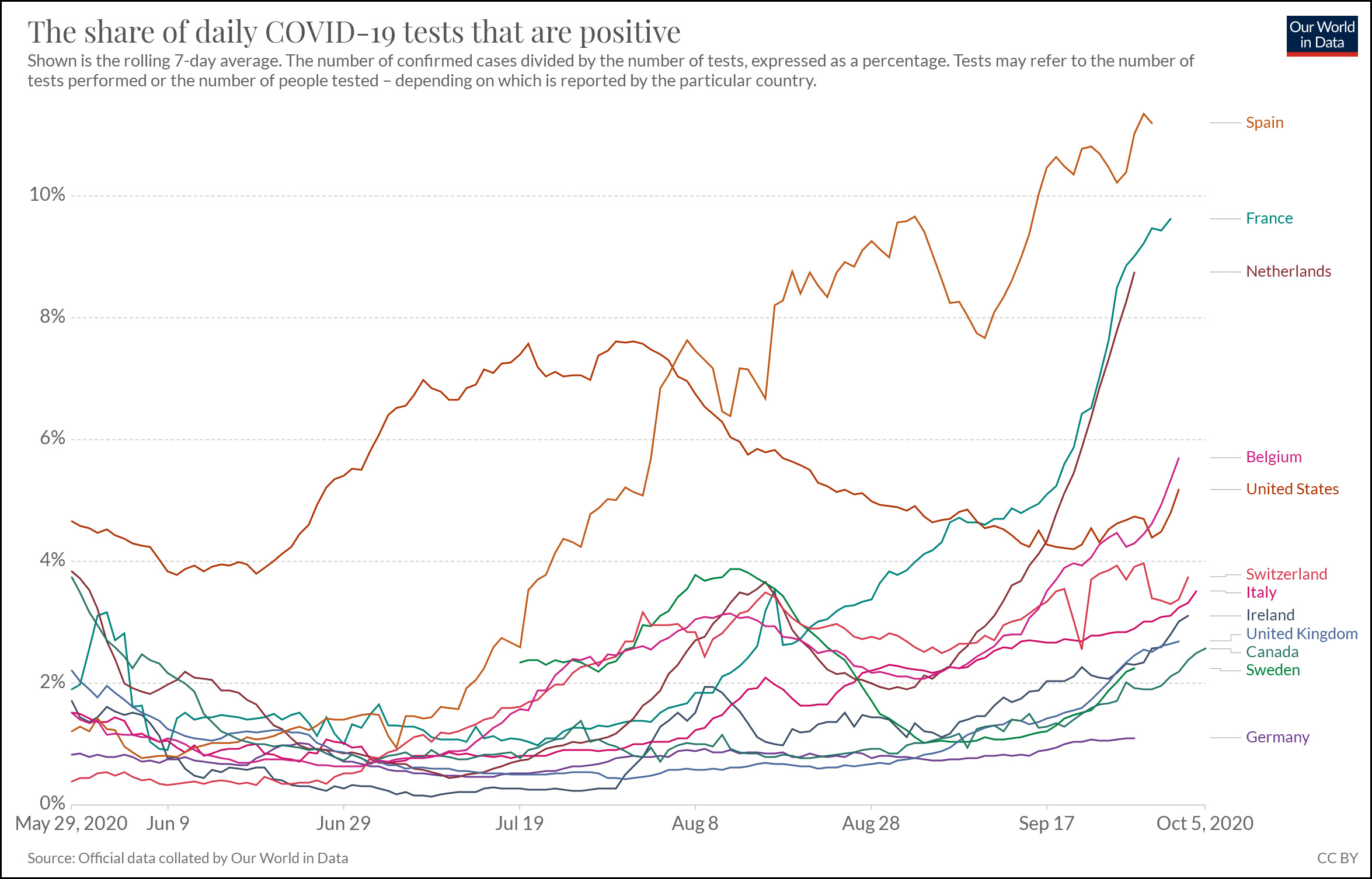
Needless to say, this is not a perfect metric either. If you test only people who are already showing symptoms, you’ll have a high rate. If you test everyone in a city, you’ll probably have a low rate. However, most countries are testing at a rate of 1-2 per thousand people, with a few outliers above and below that, which makes the positive test rate a decent look at how things are shaping up.
The chart above shows that a few countries are in terrible shape and should probably be locking down everything in sight. Another group of countries is in OK shape but obviously on the rise. And then there’s good old Germany, with a low positivity rate and a fairly flat curve.
The United States doesn’t look good on this metric. We’ve been on the rise for the past two weeks and we broke the 5 percent barrier a few days ago. Winter is coming.

Sandys Toni L/Abaca via ZUMA
Fed chair Jerome Powell is starting to sound eerily like Ben Bernanke circa 2010:
“The expansion is still far from complete,” Mr. Powell said in remarks to be delivered at a virtual economics conference Tuesday. “At this early stage, I would argue that the risks of policy intervention are still asymmetric. Too little support would lead to a weak recovery, creating unnecessary hardship.” By contrast, the risks of providing too generous relief are smaller, he said. “Even if policy actions ultimately prove to be greater than needed, they will not go to waste,” he said.
In plain English, Powell is saying that Congress needs to pass a huge spending and relief bill. It would help the recovery and make life better for millions of people. And if the spending turns out to be bigger than we needed? It’s not a big deal.
Bernanke said much the same thing, in increasingly dire terms, during the recovery from the Great Recession, but his pleas fell on deaf ears. President Obama managed to pass a piecemeal “second stimulus” in late 2010, but that was all that Republicans ever allowed even though Bernanke persistently warned that it wasn’t enough.
Today, of course, there’s a stimulus bill all ready to go, but Republicans are stalling because it’s a few hundred billion dollars bigger than they’d like. Powell is trying to tell them not to worry about that, and instead to just pass the damn thing. So far, it’s not working:
Those pushing hard for a bill include the White House. Mr. Trump tweeted from the hospital on Saturday that the country “wants and needs” more stimulus. For Mr. Trump, a deal would serve as a sign of his authority, taking attention away from his health and unfavorable polls.
Congressional leaders, though, are still haggling. When asked Sunday whether Mr. Trump’s comments meant the two parties were closer to a deal, Ms. Pelosi demurred: “No, it means that we want to see that they will agree on what we need to do to crush the virus so that we can open the economy and open our schools safely.”
Republicans are “haggling” over a $2.2 trillion bill that they want to reduce to $1.6 trillion. This is beyond ridiculous. Democrats want more than that. Trump wants more than that. The Fed chair wants more than that. The country needs more than that. What on earth are they afraid of?
Here’s the coronavirus death toll through October 5. The raw data from Johns Hopkins is here.
We have yet another country that has discovered a bunch of new COVID-related deaths: Mexico. This is why their trendline suddenly spiked up to 6 per million on Monday.
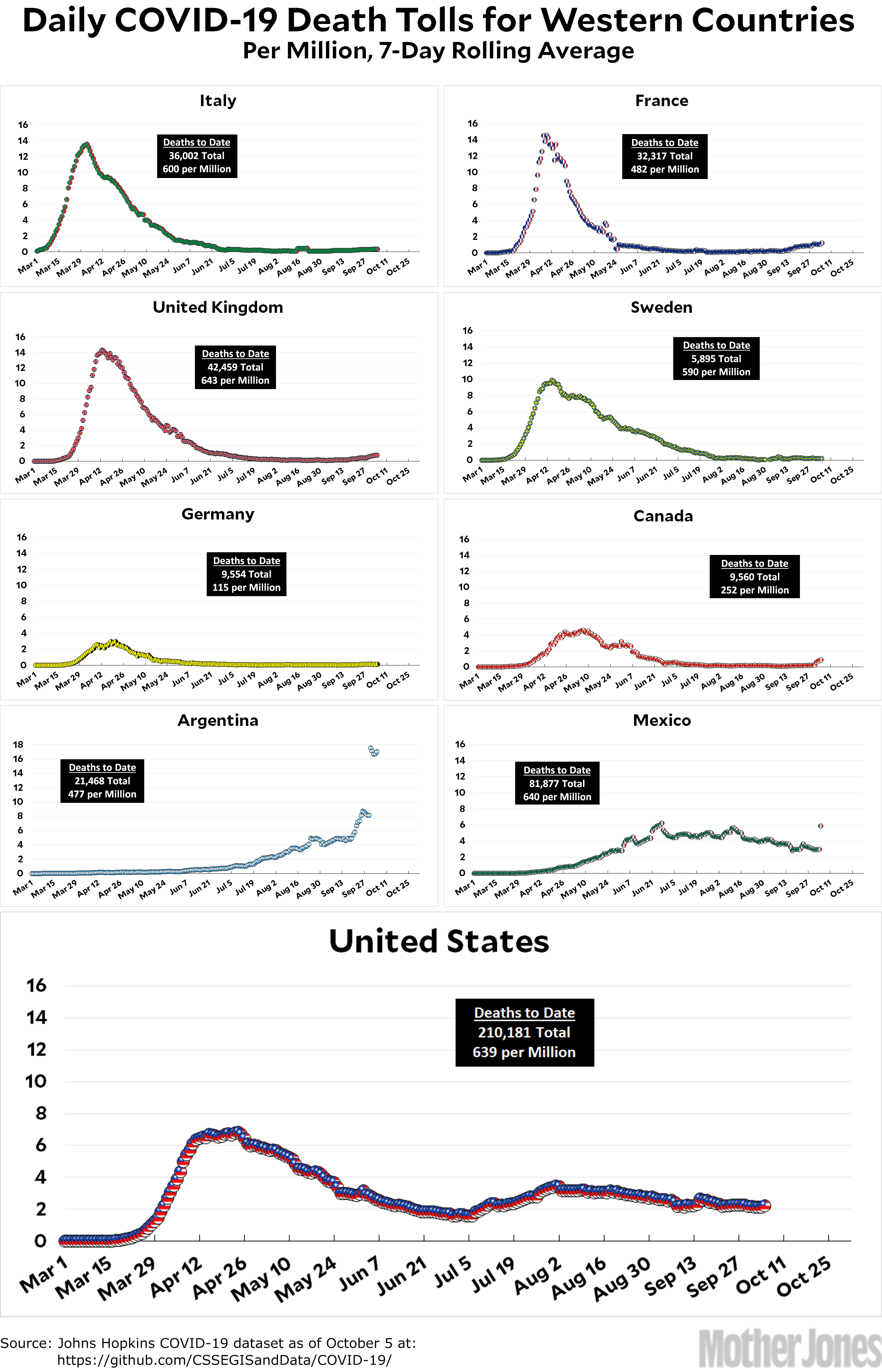
After many years of planning, disputes, and construction, today finally marks the opening of the new Gerald Desmond Bridge in Long Beach. It is California’s first and only major cable-stayed span, and it’s intended to be a “postcard bridge” for Long Beach. It runs parallel to the ugly old Gerald Desmond Bridge, which is now scheduled for a well-deserved demolition.
Naturally I took pictures. Unfortunately, the harbor is so crammed with harbor stuff that it’s surprisingly difficult to get a decent view of the bridge. For a good “postcard” view you need a boat, or, even better, a blimp. I have neither, so I was stuck with ground-level views. That said, here’s a collection of photos taken from various spots.
First up, the whole bridge rising out of the early morning fog. This was taken from northwest of the bridge:

This is probably the best overall view of the bridge, taken from the southeast:
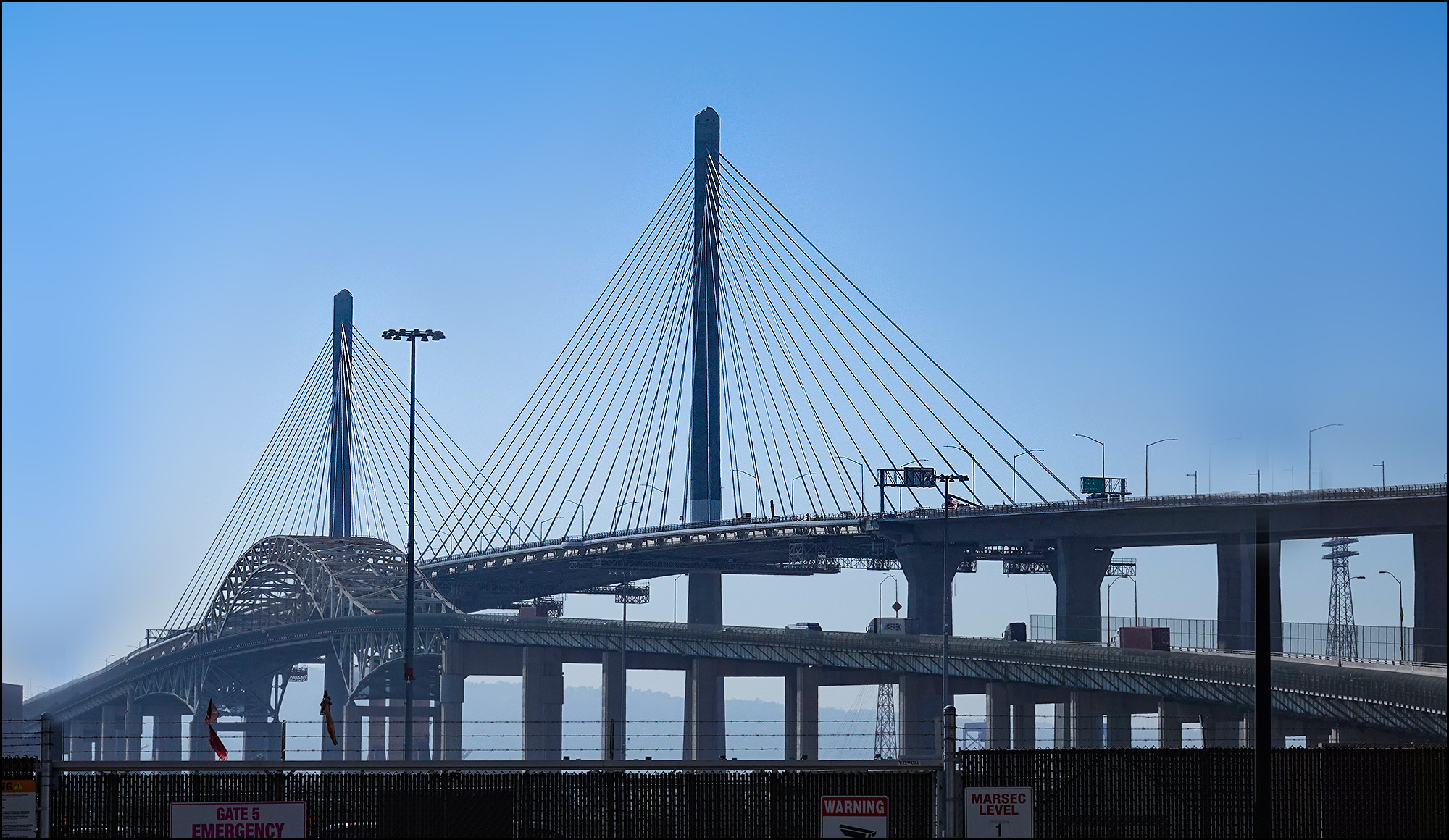
This one was taken from the deck of the old bridge.
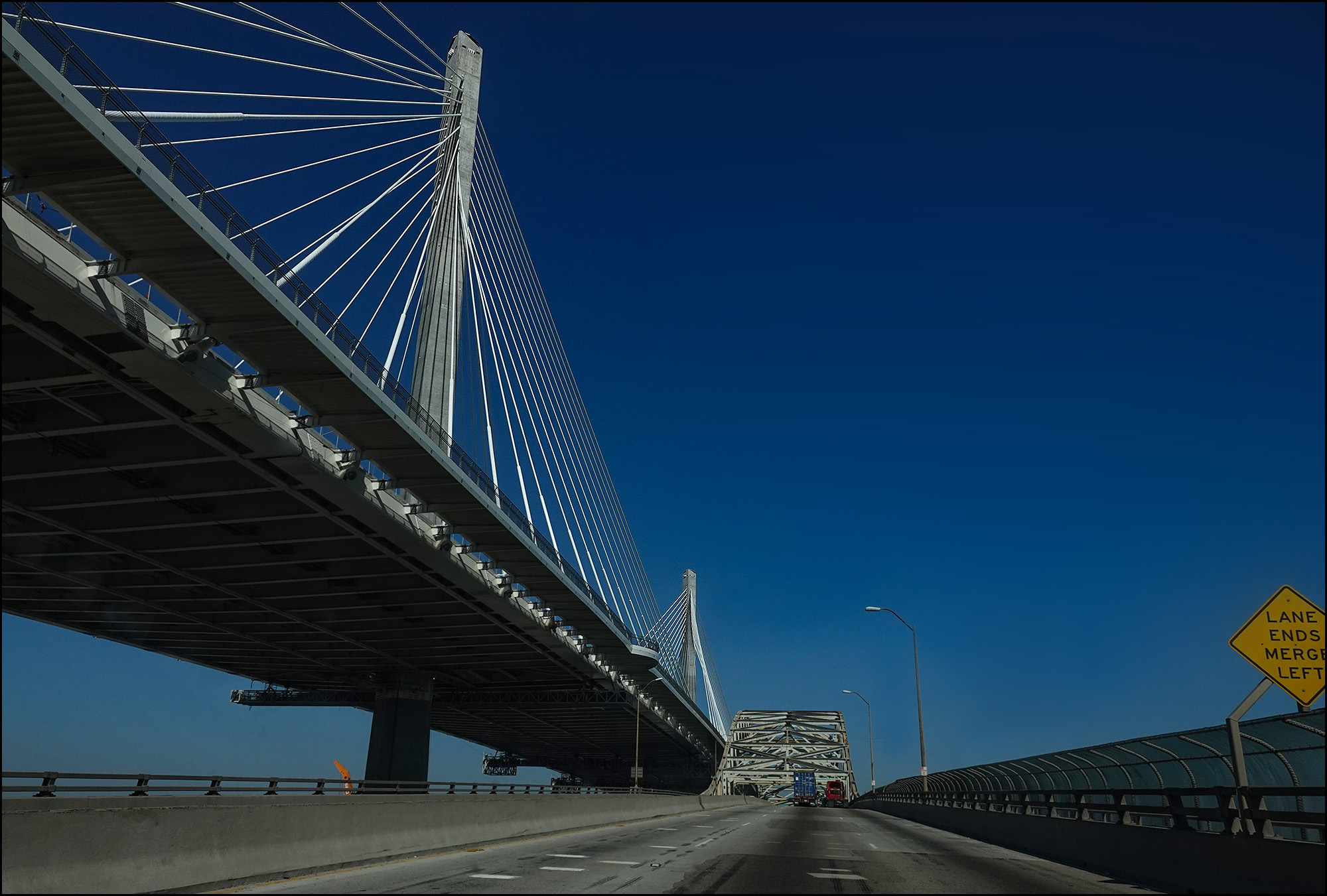
Here’s another one that clearly shows the old and new bridges together. The new one, in addition to being bigger and able to handle more traffic, is also higher than the old bridge. This allows bigger ships to dock in the inner harbor.
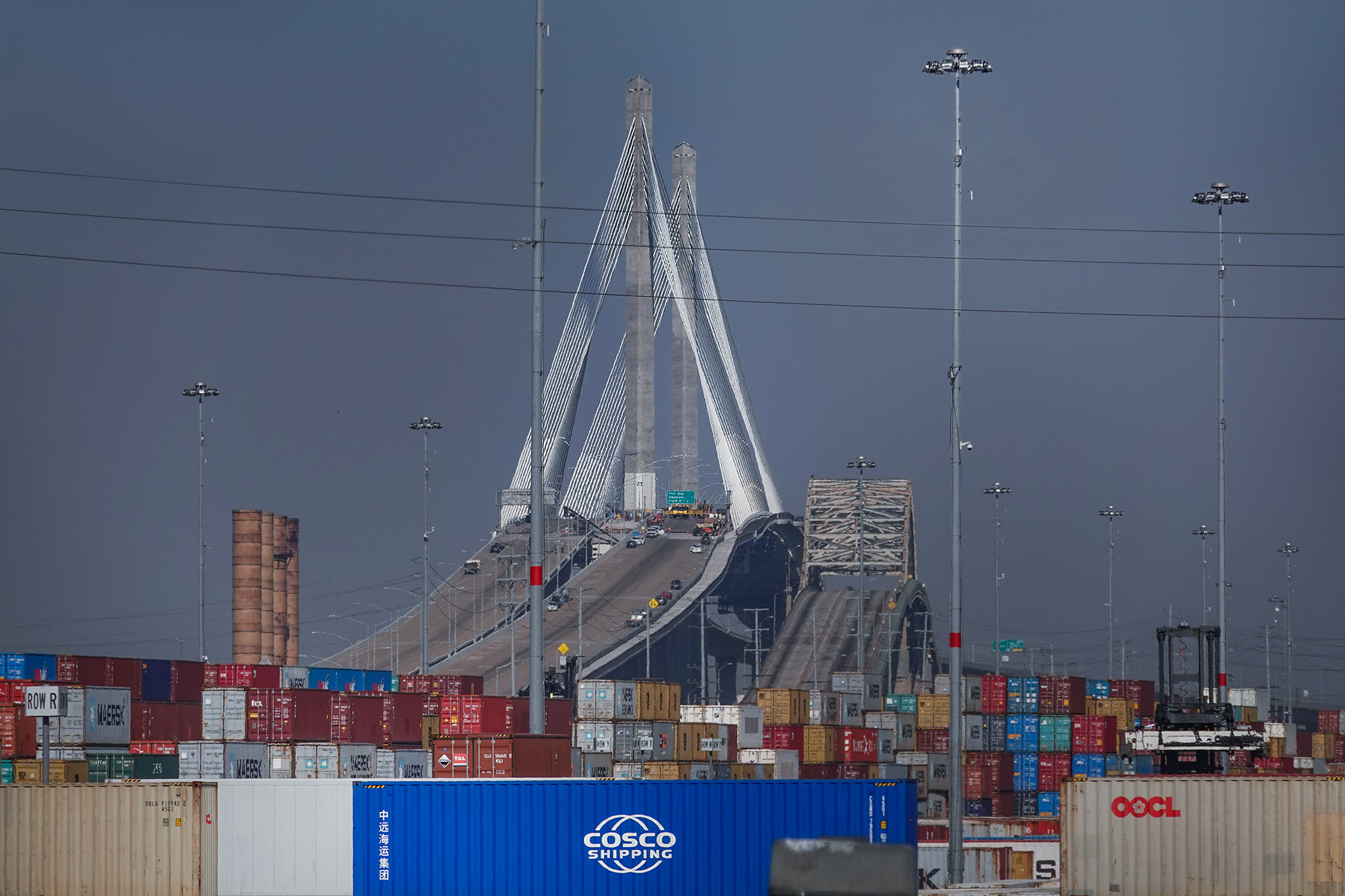
Here’s a more panoramic view from across the middle harbor:

And finally, we started with the morning fog so let’s end with it too. This is a black-and-white photo of the bridge in the early morning surrounded by harbor stuff. It provides a good context for what the bridge looks like in most actual views.
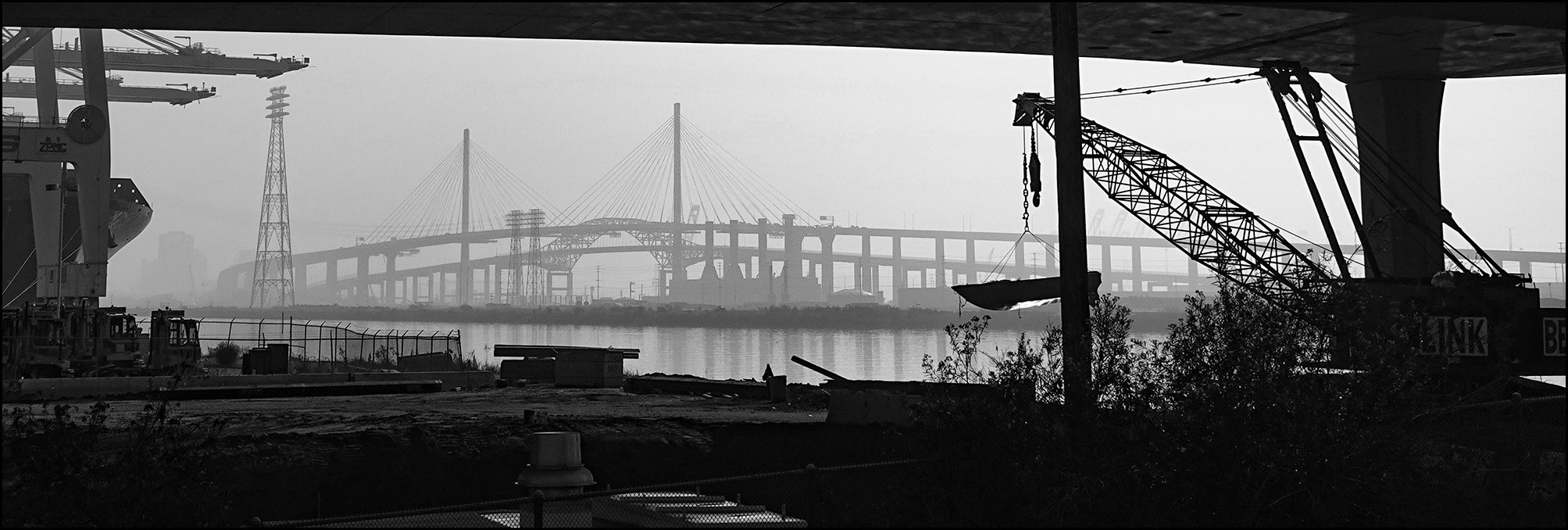
POSTSCRIPT: If you’re curious what the last image looks like in color on a sunny afternoon, here it is:

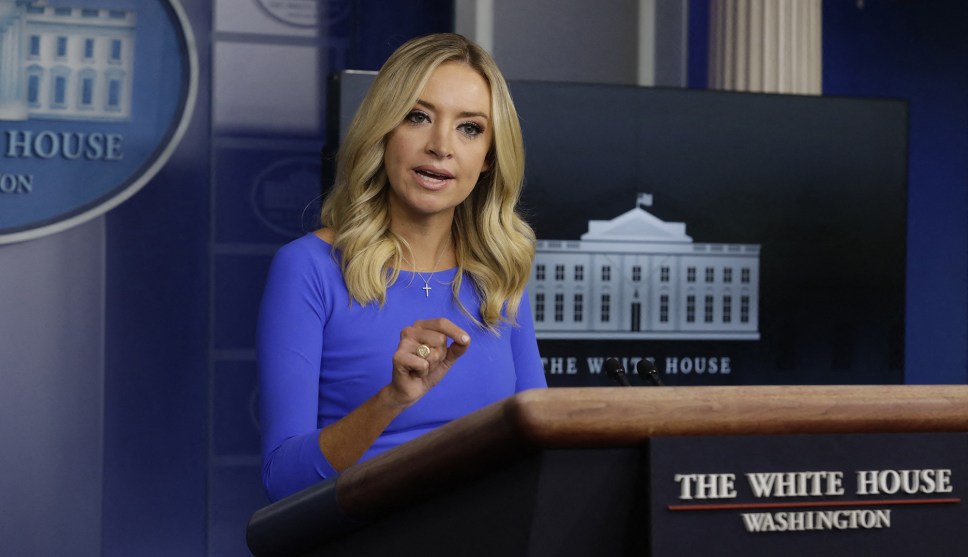
Gripas Yuri/Abaca via ZUMA
White House press secretary Kayleigh McEnany said in a statement Monday that she has tested positive for the coronavirus and will begin the quarantine process while she continues to work remotely.
Will this affect McEnany’s usual blithe attitude toward the truth when she briefs reporters? Probably not. Nothing ever seems to.
POSTSCRIPT: And this:
This is accurate. White House communications aides Chad Gilmartin and Karoline Leavitt both have coronavirus, I’m told. Other mid-level staffers have tested positive, too, in recent days. https://t.co/dDCMJHDZ0b
— Jennifer Jacobs (@JenniferJJacobs) October 5, 2020
Here’s the latest poll aggregate from the folks at the Economist:
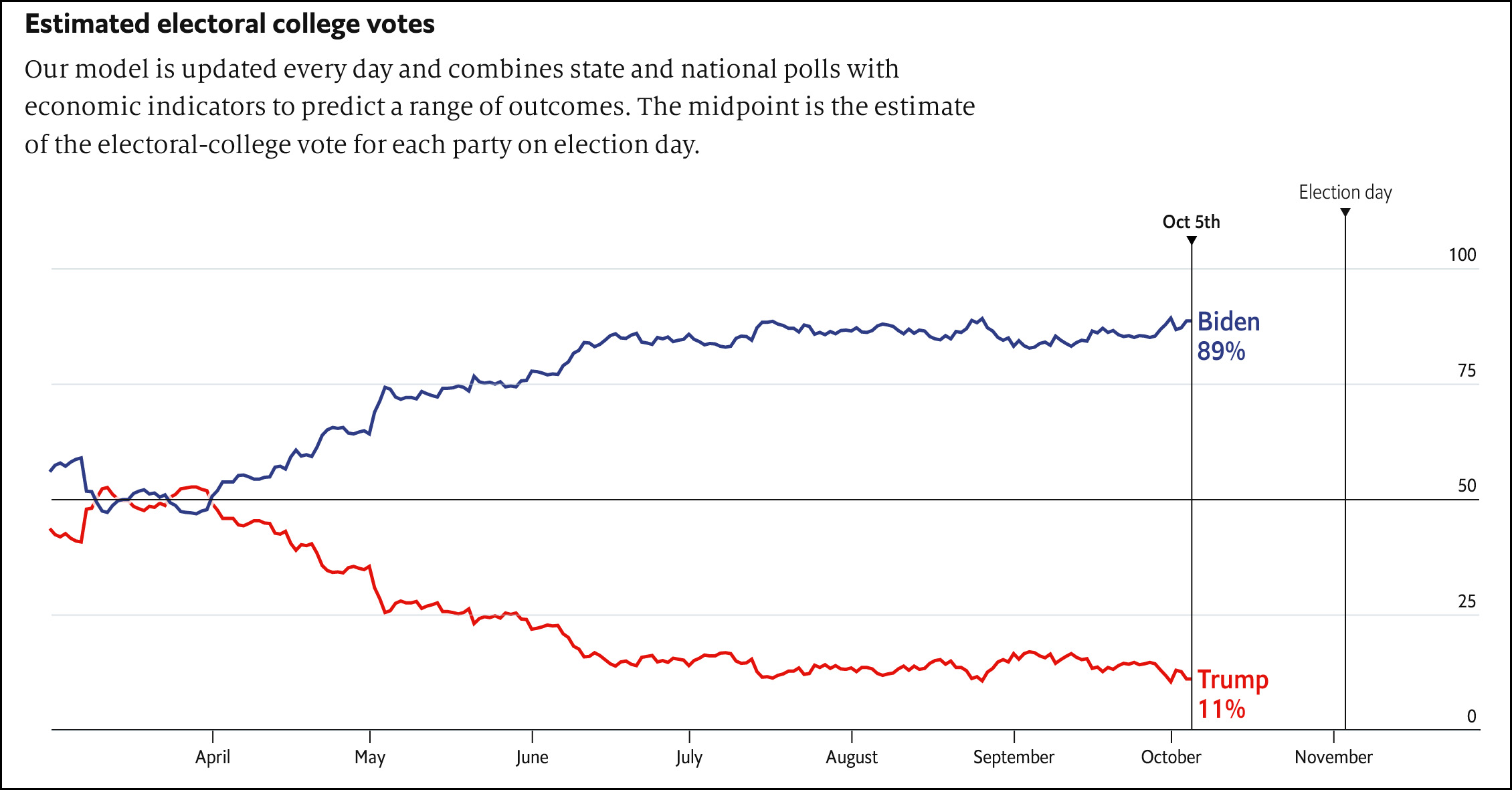
Biden continues to slowly widen his lead over Trump, which explains much of Trump’s reckless behavior lately. As he gets more and more desperate, I expect him to respond like a cornered animal. The worst is yet to come.